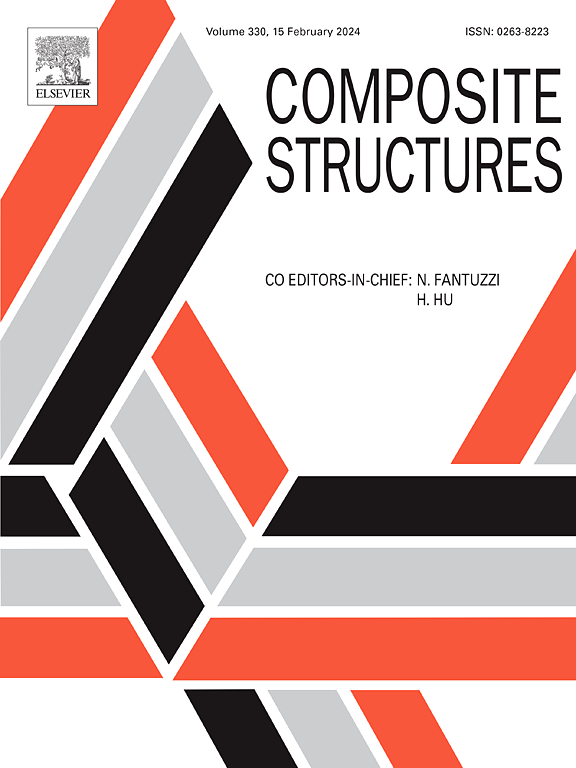Influence mechanism of beam oscillation on energy density distribution and mechanical properties of steel/CFRP joint by direct laser welding
IF 6.3
2区 材料科学
Q1 MATERIALS SCIENCE, COMPOSITES
引用次数: 0
Abstract
Direct laser welding of PA66 resin CFRP to DP780 dual-phase steel using three oscillation modes such as linear, , and circular was performed in an overlap steel-on-CFRP configuration. The influence mechanism of beam oscillation on energy density distribution and improvement of joint performance were also revealed. The results suggested that the changes of joint property were closely related to the temperature distribution at steel/CFRP interface. Beam oscillation shifted the peak of laser energy density from the middle to fringe region, decreasing the interface temperature disparity between the middle and fringe. In the case of linear mode, laser energy density at fringe and middle region is both higher than that in or circular modes, and the temperature distribution across the whole steel/CFRP interface is uniform, thus the crystallinity and flowability of PA66 resin are increased due to the compensated interface temperature difference caused by the beam oscillation, which is conducive to the interface bonding. Furthermore, the effective heating time of interface is prolonged due to beam oscillation, a high proportion of M−C and M−O chemical bonding are formed at steel/CFRP interface, hence, the mechanical performance of steel/CFRP joint is considerably improved by linear beam oscillation.
求助全文
约1分钟内获得全文
求助全文
来源期刊

Composite Structures
工程技术-材料科学:复合
CiteScore
12.00
自引率
12.70%
发文量
1246
审稿时长
78 days
期刊介绍:
The past few decades have seen outstanding advances in the use of composite materials in structural applications. There can be little doubt that, within engineering circles, composites have revolutionised traditional design concepts and made possible an unparalleled range of new and exciting possibilities as viable materials for construction. Composite Structures, an International Journal, disseminates knowledge between users, manufacturers, designers and researchers involved in structures or structural components manufactured using composite materials.
The journal publishes papers which contribute to knowledge in the use of composite materials in engineering structures. Papers deal with design, research and development studies, experimental investigations, theoretical analysis and fabrication techniques relevant to the application of composites in load-bearing components for assemblies, ranging from individual components such as plates and shells to complete composite structures.
 求助内容:
求助内容: 应助结果提醒方式:
应助结果提醒方式:


